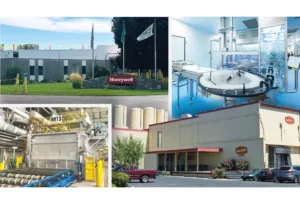Economy adds jobs faster in 2006
Manufacturing rebounds to numbers not seen since Kaiser closed Mead plant
The Spokane-area economy has added more jobs in the first five months of 2006 than it did during the year-earlier period, when it also turned in a strong performance.
An average of 6,240 more people were employed in nonagricultural wage and salary positions here in January through May this year than in the first five months of 2005, the Washington state Employment Security Department says. The metropolitan areas job figures were up from an average increase of 5,460 more employed people in the January-to-May period of 2005.
Part of it is still the construction boom, Jeff Zahir, regional labor economist here for the Employment Security Department, says of the 2006 increases. Spokane just didnt get the memo that construction is supposed to be cooling.
In May, when the Spokane area employed 6,000 more people than it did in the year-earlier month, employment in the construction and natural resources category accounted for 1,300or 22 percentof those added jobs.
Yet, the improvement in the economy here was across the board, with almost all sectors adding jobs, Zahir says.
In manufacturing, were back above the level that we were before the (Kaiser Aluminum Corp.) Mead plant closed, Zahir says. Those are good jobs. Theyre good paying and they have benefits and they have career mobility to them.
Meanwhile, the unemployment rate here was lower in each of the first five months of 2006 than it had been in each year-earlier month, falling to 4.7 percent in May from 5.2 percent in May 2005.
I really think 4.7 percent is full employment, given the number of people who have moved to the Spokane area recently, who are between jobs, or who are receiving services in Spokane, Zahir says. Economists say that when job numbers improve, as they have in Spokane for the last two years, in-migration of residents occurs.
Meanwhile, nonfarm employment in Kootenai County jumped by 4.3 percent in May from the year-earlier month, climbing to 54,980 employed people from 52,710, according to preliminary figures from the Idaho state Department of Commerce and Labor. In April, the unemployment rate there fell to 3.5 percent, down from 4.2 percent in the year-earlier month.
The county continues to enjoy rapid growth, although growth is somewhat slower than the amazing gains of the previous two years, Kathryn Tacke, the departments Coeur dAlene-based regional economist, wrote in the departments monthly newsletter.
Job numbers were of keen interest here last year, when the Spokane area was coming off a year2004in which it had added just 1.4 percent more jobs, which was seen as a mediocre performance. The metropolitan-area economy performed powerfully in 2005, when average annual employment climbed by 2.6 percent. In January and February this year, the economy added 3.4 percent and 3.7 percent more jobs, respectively, compared with the year-earlier month, and it added 2.9 percent more jobs in March. Aprils increase was 2.4 percent, and Mays was 2.9 percent.
Given the job gains and lower unemployment rate, Zahir says, Its a matter of not being able to believe the good fortune of what weve had here the last couple of years.
He adds, Id like to see the 3 percent (job growth) continue through the rest of the year, but theres a huge cloud hanging over that, mainly the inflationary pressure and gas prices and also the (federal) deficit. Warnings by new Federal Reserve Chairman Ben Bernanke about the danger posed by inflation preceded hefty recent losses by the stock market. Gas prices have risen sharply, and economists increasingly are concerned about the ballooning federal deficit, Zahir says.
Says Tacke, I think there are some really strong negatives in the U.S. economy. Like Zahir, she cites inflation, gas prices, and the deficit as concerns, and adds, Stocks are not performing as well, which means theres a loss of wealth. Because of the U.S. dollars slide in value, foreign investors arent as willing to invest in dollars, and Americans have continued to rely on debt, which also is a concern, Tacke says. Everybody has been living off of their plastic in one way or another, she says.
The drought worries that hung over Washington states agricultural industry last year have been washed away by heavy rains this spring, but the added moisture has brought new concerns on many farms, Zahir says. For example, storms that blew through in early May destroyed crops at an important boutique farm in Stevens County and a large cherry farm in the Walla Walla, Wash., area, and heavy rains two weeks ago hit cherry crops in other areas, he says.
Closer to home, government is one sector that isnt adding many jobs, and the health-care sector isnt adding jobs as rapidly as he had expected, Zahir says.
The main one that Im concerned about is the health-sciences sector, says Zahir. While its growing, its anemic. Its one of the tent pegs of the Spokane economy.
Contact Richard Ripley at (509) 344-1261 or via e-mail at [email protected].
Related Articles

_c.webp?t=1763626051)

_web.webp?t=1764835652)
